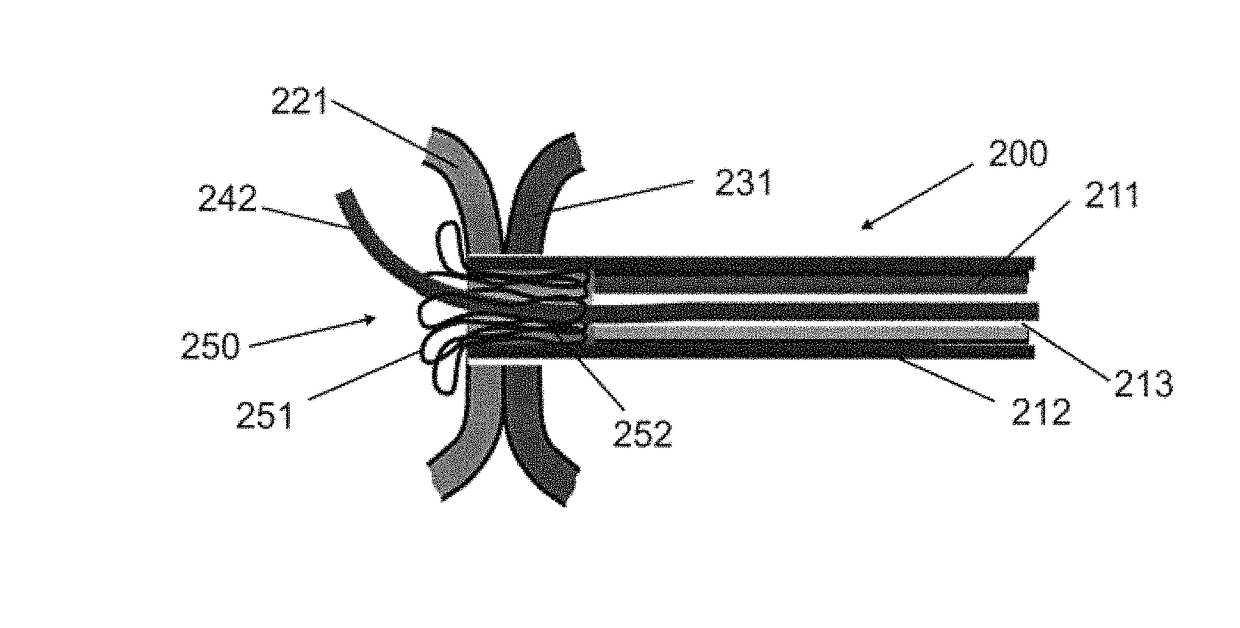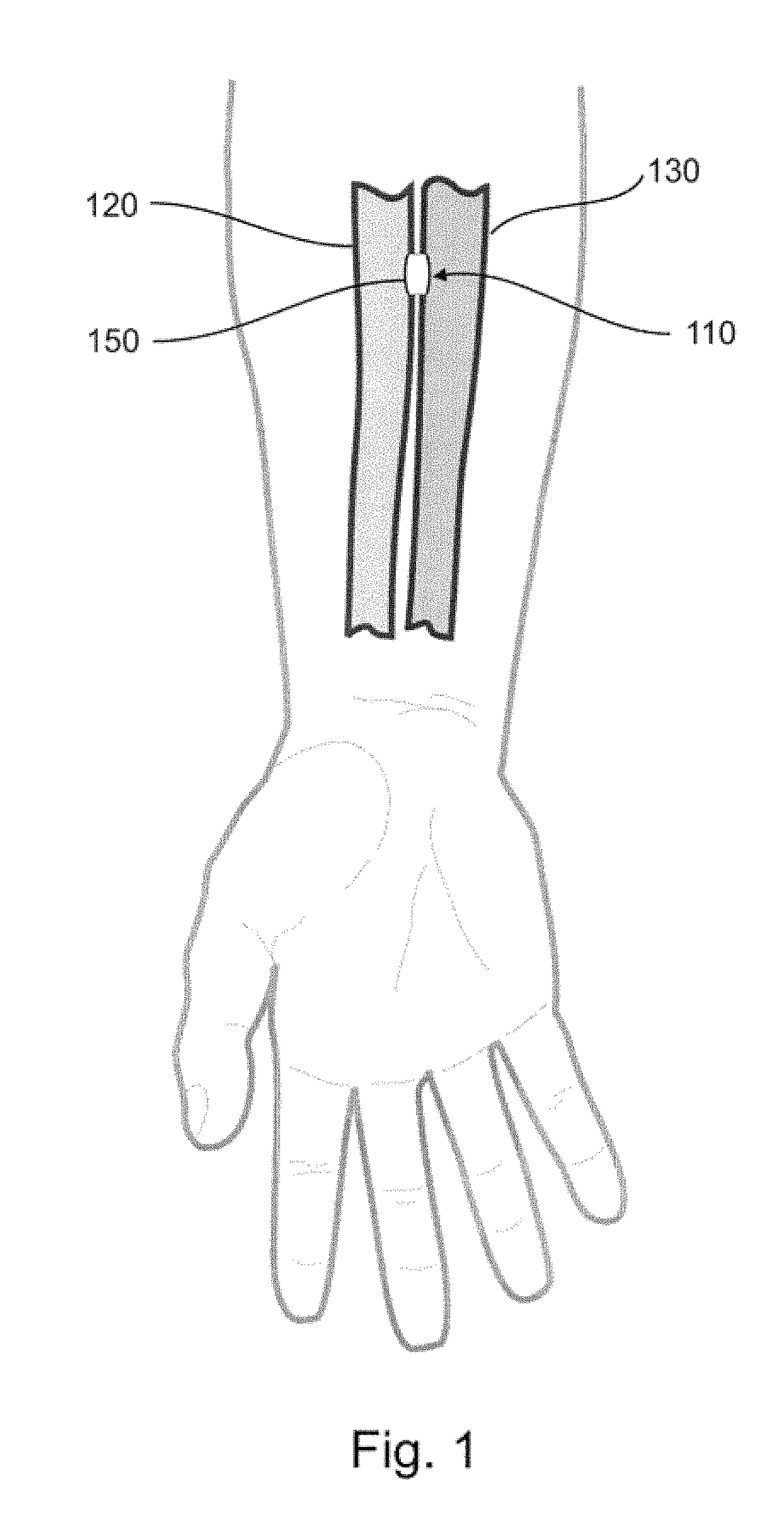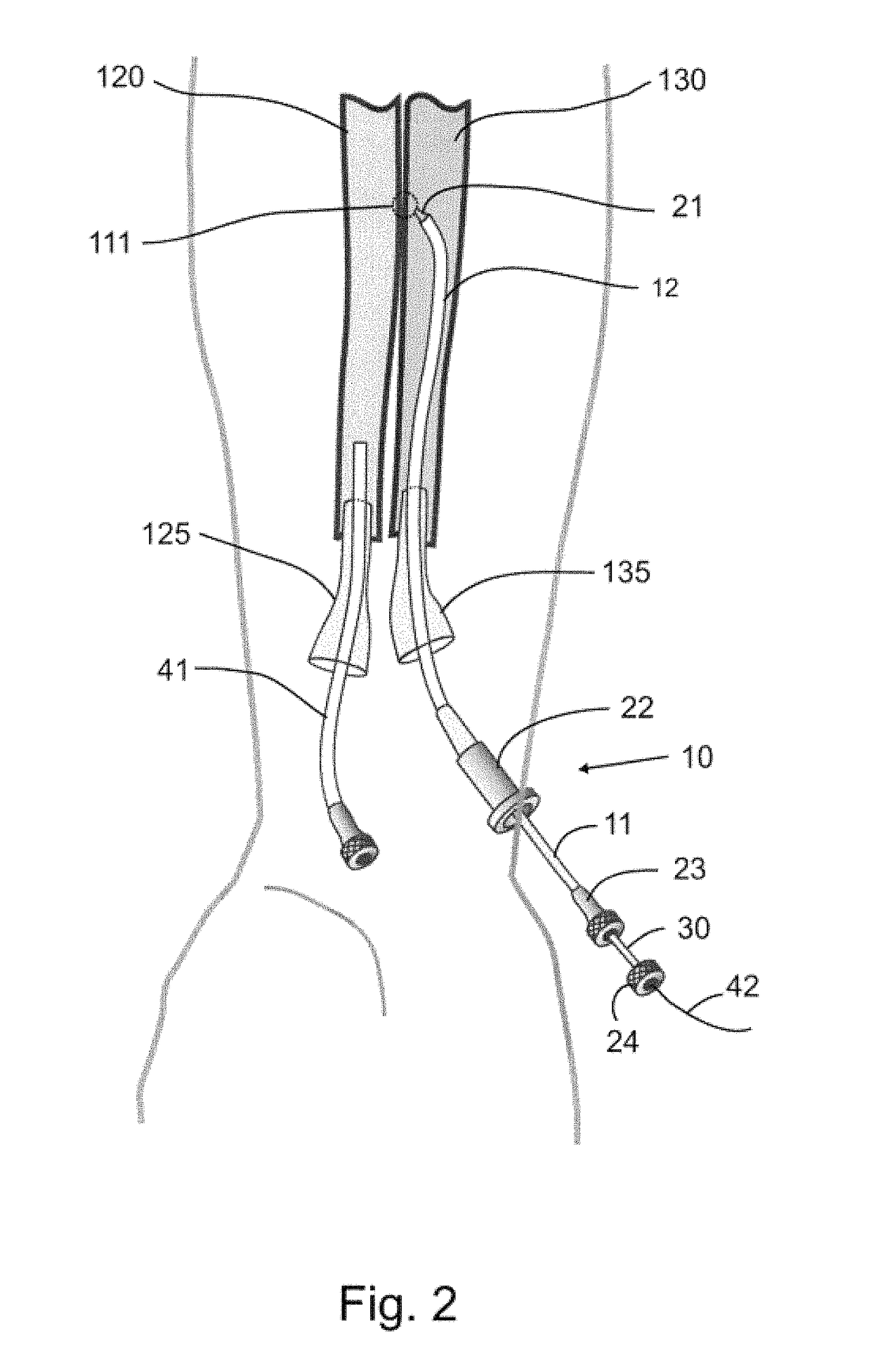Devices, systems, and methods for peripheral arteriovenous fistula creation
a technology of arteriovenous fistula and peripheral arteriovenous vein, which is applied in the field of medical devices and methods, can solve the problems of long recovery time and not always provide a clear patient benefit, and achieve the effects of reducing neointimal proliferation, preventing tissue from protruding into the flow path of the fistula, and reducing bleeding of the tissue neighboring
- Summary
- Abstract
- Description
- Claims
- Application Information
AI Technical Summary
Benefits of technology
Problems solved by technology
Method used
Image
Examples
Embodiment Construction
[0037]Reference will now be made in detail to the present embodiments of the invention, examples of which are illustrated in the accompanying drawings. Wherever possible, the same reference numbers will be used throughout the drawings to refer to the same or like parts.
[0038]FIG. 1 depicts a peripheral arteriovenous fistula, fistula 110, created in a patient, such as a human or other animal, between artery 130 and vein 120. Fistula 110 is located in the patient's forearm and provides oxygenated blood from the higher-pressure arterial system to the venous system such that blood flows from the artery 130 to vein 120 through and fistula 110. The fistula may be created in one or more of a set of numerous locations in the body of the patient, preferably in a limb to avoid unnecessary trauma and risk to a major, central vessel such as the Aorta and Vena Cava. Applicable arteries for fistula 110 include but are not limited to: axillary; brachial; ulnar; radial; profundal; femoral; iliac; p...
PUM
 Login to View More
Login to View More Abstract
Description
Claims
Application Information
 Login to View More
Login to View More - R&D
- Intellectual Property
- Life Sciences
- Materials
- Tech Scout
- Unparalleled Data Quality
- Higher Quality Content
- 60% Fewer Hallucinations
Browse by: Latest US Patents, China's latest patents, Technical Efficacy Thesaurus, Application Domain, Technology Topic, Popular Technical Reports.
© 2025 PatSnap. All rights reserved.Legal|Privacy policy|Modern Slavery Act Transparency Statement|Sitemap|About US| Contact US: help@patsnap.com



